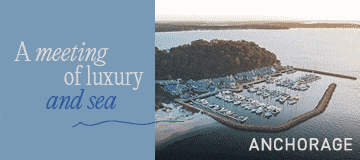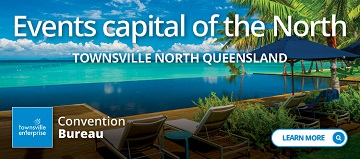It reinforces the feeling that anecdotal evidence has already shown. The summary of the study is that it “reveals a significant disparity in neural activity during face-to-face conversations compared to Zoom interactions”.
In summary, when comparing the neural response of two people interacting face to face versus interacting over Zoom, the social systems of the brain showed far more stimulus for face-to-face interactions. Essentially, we humans are social people. The additional facial cues, body language and other stimulus in a face-to-face interaction appear to stimulate the brain more when we are face to face.
“In this study we find that the social systems of the human brain are more active during real live in-person encounters than on Zoom,” Joy Hirsch told Neuroscience News. Hirsch is the Elizabeth Mears and House Jameson Professor of Psychiatry, professor of comparative medicine and neuroscience, and senior author of the study.
“Zoom appears to be an impoverished social communication system relative to in-person conditions.”
What does this mean for online events, virtual presentations or simply managing teams remotely?
Quite simply, it means, do better.
Firstly, it is fair to assume that this outcome does not only apply to Zoom. In this instance the researchers used Zoom. I believe these results would be transferrable to whatever virtual platform you used: Teams, Chat, GotoMeeting, Hangout, Whatsapp and so on.
Secondly, this research is NOT saying “Oh it’s too hard to do, so let’s just not!” Virtual communication requires for us to do better – both as the giver and as the receiver.
Too often our audience doesn’t apply enough effort to receive the communication. They will look at a second (or third) screen, their phone, doodle on paper, or even worse, turn off their camera and walk away.
The question has to be asked, what can we do to be a better audience. How can we stay focussed, remove distractions and be present? How do we get the most out of this opportunity regardless of whether it is a one-on-one or a group presentation?
Having said that, when we communicate, we have very little control over the behaviour of the audience. We need to communicate in a way that is received better or is easier to communicate. This research seems to indicate it is even more important to do this when communicating virtually. So how do we do that?
Here are the top seven ways to communicate better virtually:
Have clear sound
If your lighting is not great or you are only using a webcam in a strange environment, we will put up with it. But if your sound has echoes, is not clear or we have to strain to hear you, we will tune out (if not disconnect). Make sure your sound is rock solid. Often it is not about the microphone, it is about the room. Be aware of hard surfaces that cause the sound to bounce and create echo – simply putting down a rug or blanket and closing the curtains can make a massive difference.
Look down the camera
Eye contact counts. Virtually, this means looking down the camera and not at your notes or the images of your delegates. By all means glance at them, just remember that most of your time should be spend staring down the barrel of the camera. Eye contact counts and makes a significant difference.
Give more energy
Virtually, it is the presenter that has most of the energy. Face to face you can get energy just from the bodies in the room, but not virtually. So be more energetic. Have more facial reactions. Use gesticulations to reinforce your messages. Use voice modulation and pitch. This research essentially proves that if you are doing the same thing as you do face to face when you are virtual, you won’t get the same results. You have to give more energy to light up their brains.
Hit all three learning approaches
The three approaches are: visual, auditory and kinaesthetic (VAK). Be sure to add some of each to your communication style. This means using things like props, sound effects, onomatopoeia (words that sound like what they are describing like “pop”, “sizzle” and “kapow”), visual effects, movement, breakout rooms, interaction, avatars and more.
Use Interesting Language
Building on the previous point, be sure to use VAK language. For example, “Can you see how this impacts us?” (Visual), “How does this sound to you?” (Auditory) or “How would it feel if…?” (Kinaesthetic). Don’t stop there. Use some interesting language. Vary your style. Stay away from the standard management “weasel words”, and consider poetry or reference popular culture – song lyrics, movies or tap into the current zeitgeist. How you say something needs to be as interesting as what you say.
Engage by getting the audience to do something
An event belongs to the delegates. They no longer want an event or communication done TO them, they want it done WITH them. They want a dialogue rather than a monologue. So, get them to be part of it. From simple polls or word clouds to breakout rooms and interactive Q&A, the more the delegates can do, the more they will tap into the IKEA Effect and engage deeper in the conversation or event.
Have fun
The Minister for Fun once said, “If it’s not fun, don’t do it. If you have to do it, make it fun.” It is rare to find a conversation, event or situation that can’t have a little fun injected into it. You don’t need to be a stand-up comedian, you don’t need raucous guffaws of laughter. Simply add a sprinkle of fun and joy and the communication will be received a little more easily and be far more memorable. There are some great things you can do virtually that you simply cannot do face to face. So, take advantage of that. Digital dress ups anyone?
There is no doubt that communicating digitally has some unique challenges and this research highlights that. Most people prefer face to face and respond more strongly to it. This means we need to rise to the challenge. Quite simply, when it comes to virtual communication and virtual presenting we need to get better.
Virtual communication will be with us from here on in. It makes the world smaller, people closer and life better – we will never get rid of it. So, let’s take advantage of this research and make virtual communication better for everyone.
Warwick Merry is a global award-winning event host and event evangelist. For over 20 years he has been hosting and producing online, hybrid and in-person events. He is the host of the Making Events Awesome livestream and Making Events Awesome group.




















